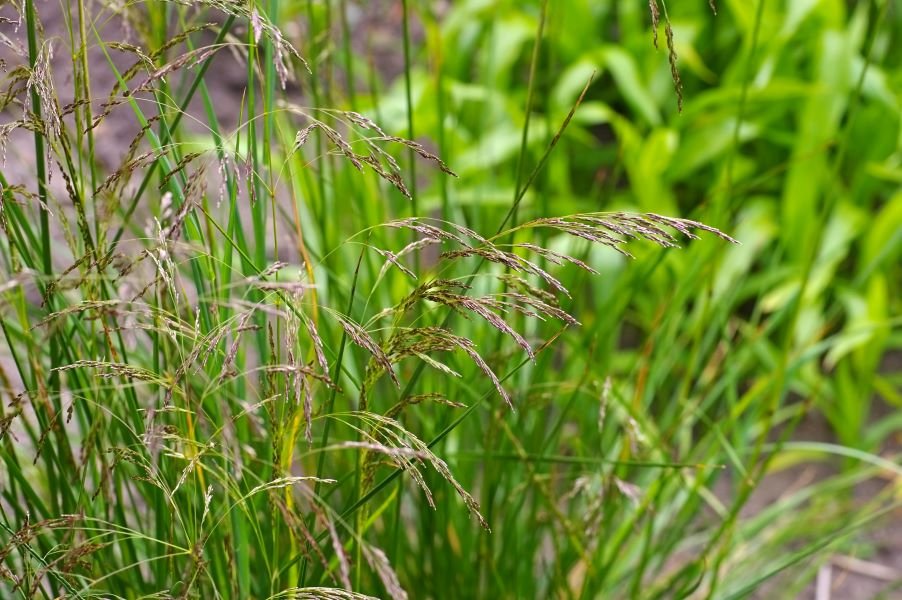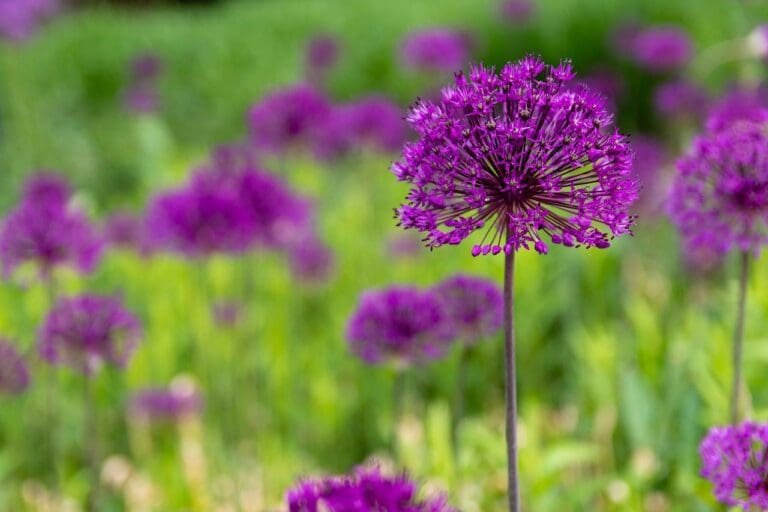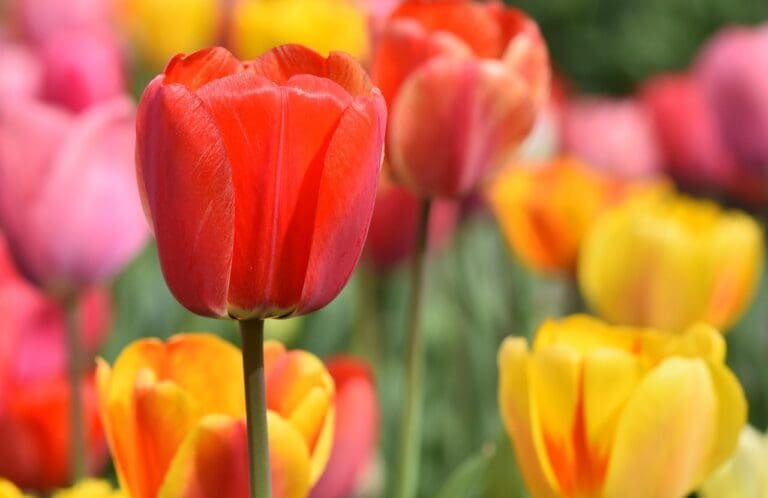Deschampsia cespitosa, commonly known as tufted hairgrass, is a beautiful and versatile ornamental grass. With its fine-textured foliage and delicate, airy flowering plumes, Deschampsia cespitosa brings soft texture and graceful movement to gardens and landscapes. This clumping grass is highly adaptable, thriving in various soil types and light conditions. From cottage gardens to modern landscapes, Deschampsia cespitosa is an excellent choice for adding refined elegance and fluidity.
This article provides a comprehensive guide to Deschampsia cespitosa, covering its growth habits, care requirements, propagation, and diverse landscape uses. Read on to learn why this ornamental grass deserves a spot in your garden design.
You might also be interested in: Ornamental Grasses
What is Deschampsia Cespitosa?
Deschampsia cespitosa, also called tufted hairgrass, is a densely tufted, clump-forming grass. It features very slender, fine-textured leaves that emerge light green in spring and transition to an attractive chartreuse color during summer. The delicate foliage takes on warm, golden bronze hues in fall.
In early summer, airy panicles emerge, eventually expanding into flowing, cloud-like plumes in late summer and fall. These plumes emerge greenish-white, fading to golden-tan as they mature. The fine, hair-like flowers create a soft, gossamer effect.
Deschampsia cespitosa thrives in full sun to partial shade exposures, adapting to a range of soil conditions including moist, well-drained soils and even periodically dry soils. Its medium size and graceful habit make it a lovely accent plant in beds, borders, and containers.
Care and Cultivation of Deschampsia Cespitosa
Deschampsia cespitosa is praised for its easy, low-maintenance nature. Just a few simple care practices will keep this ornamental grass looking its best:
- Planting: Plant in spring or fall, spacing plants 18-24 inches apart in well-draining soil. Amend soil with compost as needed to improve drainage.
- Watering: Water regularly after planting until established. Mature plants have moderate drought tolerance but prefer consistently moist soils.
- Fertilizing: Apply a balanced granular fertilizer in early spring. Fertilize occasionally during the growing season if plants need a boost.
- Light: Grows best in full sun but tolerates partial shade. Provide at least 4-6 hours of sun per day.
- Soil: Adaptable to most well-draining soils including loam, sandy, clay, chalky, and rocky soils. Intolerant of wet, poorly draining soils.
With its moderate watering needs, flexibility in soil pH and type, and low fertilizer requirements, Deschampsia cespitosa is easy to cultivate. Pay attention to drainage and provide adequate sun for best results.
Propagating Deschampsia Cespitosa
Deschampsia cespitosa can be readily propagated by division or from seed. Here are simple tips for each method:
Division
- Divide mature clumps in early spring before new growth emerges or in fall after flowering.
- Use a shovel to dig up the entire clump. Gently pull clump apart into smaller divisions.
- Each division should have 3-5 healthy stems and intact root mass.
- Re-plant divisions immediately at the same depth as before. Water well.
Seed
- Sow seed outdoors in fall. Choose a site with well-draining soil.
- Rake area smooth and sow seed just below the soil surface. Gently water seed in.
- Maintain even moisture until seed germinates in 10-30 days. Thin seedlings.
- Transplant seedlings once they reach 2-3 inches tall. Space plants 12 inches apart.
Landscape Applications of Deschampsia Cespitosa
With its graceful form and texture, Deschampsia cespitosa is highly versatile in gardens and landscapes. Here are some excellent uses for this ornamental grass:
- Edging or border plant: The fine texture and medium size make it ideal to edge paths, beds, and borders. Allows pedestrian traffic to brush through without damage.
- Accent or focal point: Draw the eye by planting in drifts or masses. The delicate plumes create unique interest.
- Erosion control: The dense, tufted growth helps stabilize soils and prevents erosion on slopes and banks.
- Cottage gardens: Complementary to old-fashioned annuals and perennials. Provides soft contrast to bold foliage.
- Prairie gardens: Evokes the windswept grasses of the prairie. Lovely mingled with native wildflowers.
- Modern gardens: Adds fluid, contemporary style. Pairs well with ornamental grasses and minimal plantings.
- Containers: Grows well in pots and planter boxes. Allows flexibility in design.
Frequently Asked Questions
Q. What is the difference between Deschampsia cespitosa and other ornamental grasses?
Deschampsia cespitosa is finer in texture than many ornamental grasses. It also produces delicate, wispy flower plumes rather than large, showy plumes. It has a medium size and clumping habit, reaching 18-24 inches tall and wide at maturity.
Q. How do I know if my Deschampsia cespitosa needs watering?
Check the soil moisture a few inches below the surface. If the soil is dry more than 1-2 inches down, it’s time to water. Leaves may start to curl slightly or turn dull green when the plant needs water.
Q. Can Deschampsia cespitosa grow in full shade?
While it adapts to partial shade, Deschampsia cespitosa needs a minimum of 4-6 hours of direct sun per day. Too much shade will result in thin, floppy growth.
Q. How do I divide Deschampsia cespitosa?
In early spring or fall, use a shovel to dig up the entire clump. Gently pull apart into divisions, ensuring each division has 3-5 stems and intact roots. Replant divisions immediately at the same depth.
Q. What are some common pests and diseases?
Deschampsia cespitosa has few serious pest or disease problems. Occasionally may be affected by leaf spot, rust, or melting out. Avoid overwatering and promote air circulation to prevent diseases.
Final thoughts
With its fine-textured elegance and graceful form, Deschampsia cespitosa is a wonderful choice for gardens. This low-maintenance, adaptable grass thrives in a variety of climates and soil conditions. Add soft, airy texture and movement by incorporating Deschampsia cespitosa as edging, in drifts, or as a focal point. Let its wispy blooms and lacy foliage bring a refined, contemporary style to your landscape.



